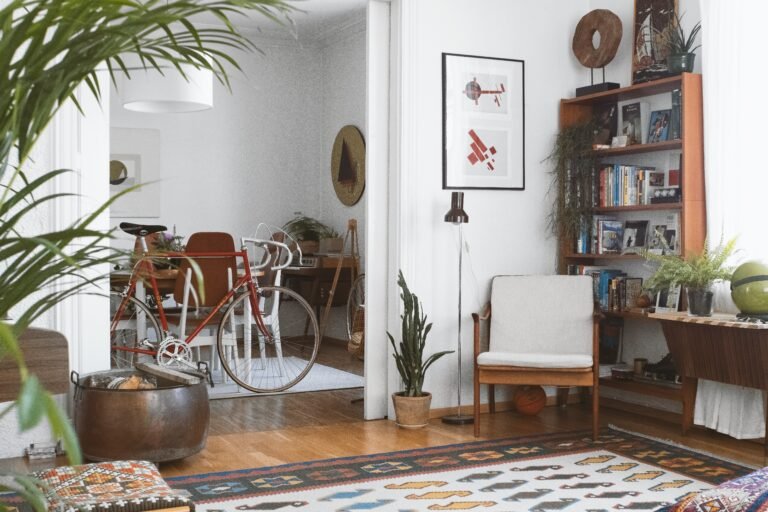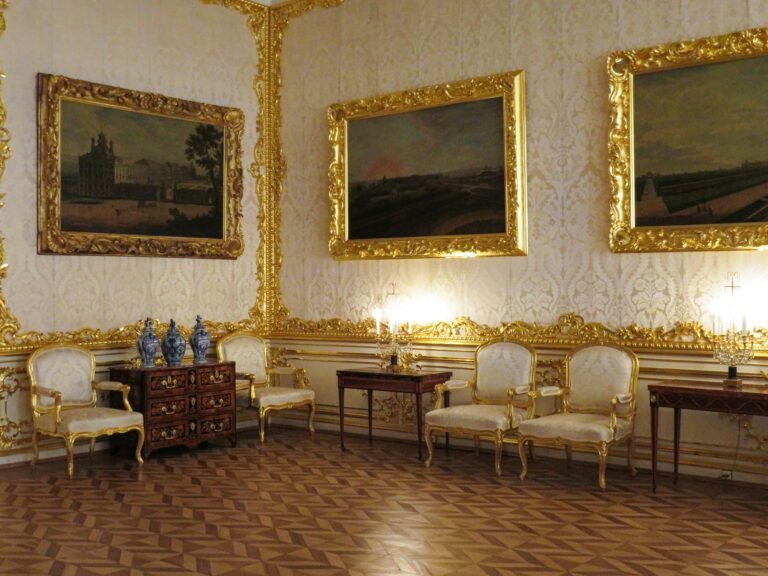Biophilic design is an interior design philosophy that focuses on incorporating natural elements into indoor spaces to improve well-being, enhance aesthetics, and create a stronger connection to nature. As modern living often separates us from the outdoors, biophilic design helps reintroduce natural textures, materials, greenery, and organic patterns into our homes and workplaces.
Bringing nature indoors doesn’t just elevate a space visually—it also has profound effects on mental health, productivity, and overall well-being. Whether you live in a city apartment or a suburban house, biophilic design can transform your home into a refreshing, tranquil sanctuary.
1. The Core Principles of Biophilic Design
Biophilic design is more than just adding a few plants—it’s about integrating nature’s patterns, materials, and elements into every aspect of an interior space. Below are the key principles:
1.1 Maximizing Natural Light
Natural light is one of the most effective ways to enhance mood, regulate sleep cycles, and create a dynamic environment. To maximize sunlight in your home:
- Use large windows, skylights, or glass doors to increase daylight exposure.
- Choose sheer curtains or adjustable blinds to control brightness while maintaining an open feel.
- Arrange mirrors strategically to reflect light and create a brighter atmosphere.
1.2 Integrating Natural Materials
Biophilic design emphasizes the use of organic materials to bring warmth and authenticity into a space. Consider incorporating:
- Wood (furniture, flooring, paneling) for a rich, earthy touch.
- Stone and marble for durability and a natural aesthetic.
- Clay, terracotta, and ceramic for artisanal accents.
- Linen, cotton, and wool textiles to add softness and natural texture.
1.3 Incorporating Greenery and Living Plants
Plants not only improve air quality but also reduce stress, boost creativity, and add life to any space. To embrace greenery:
- Use potted plants, hanging gardens, or wall-mounted planters.
- Incorporate low-maintenance species such as snake plants, pothos, and peace lilies.
- Create an indoor herb garden in your kitchen for fresh herbs year-round.
- Introduce living walls or vertical gardens to maximize greenery in compact spaces.
1.4 Water Elements for a Sense of Calm
Water is a soothing natural element that can enhance relaxation and reduce noise pollution. Ways to integrate water into interior spaces include:
- Small tabletop fountains that provide soft, flowing sounds.
- Aquariums with live fish and aquatic plants.
- Wall-mounted water features that add a dynamic, artistic touch.
1.5 Natural Shapes and Patterns
Instead of rigid, geometric forms, biophilic design embraces organic shapes found in nature. Ways to implement this principle include:
- Curved furniture and decor that mimic natural landscapes.
- Botanical or abstract nature-inspired patterns on textiles and wallpaper.
- Asymmetrical arrangements to create a more organic and flowing aesthetic.
1.6 Earthy and Soothing Color Palettes
Nature-inspired colors help create a calming, restorative environment. The best biophilic color schemes include:
- Shades of green to mimic forests and plant life.
- Warm browns and neutrals for an earthy feel.
- Soft blues and greys to reflect water and the sky.
- Terracotta and sandy tones for a sun-kissed aesthetic.
By embracing these principles, you can seamlessly bring nature indoors, making your home feel more connected to the world outside.
2. How to Incorporate Biophilic Design in Every Room
2.1 Living Room: A Relaxing Natural Retreat
The living room is often the heart of the home, making it an ideal space for biophilic design elements. Enhance this space by:
- Arranging large potted plants like fiddle leaf figs or palms.
- Choosing wooden coffee tables and woven baskets for natural texture.
- Incorporating natural fiber rugs and throws for added warmth.
- Letting in as much natural light as possible with unobstructed windows.
✔ Pro Tip:
- Use open shelving with plants and natural decor to balance greenery and functionality.
2.2 Bedroom: A Tranquil Nature-Inspired Retreat
A bedroom designed with biophilic principles promotes better sleep and relaxation. Try:
- Opting for organic cotton or linen bedding in earthy tones.
- Placing small bedside plants like lavender or aloe vera.
- Choosing wood or rattan furniture to maintain a cozy atmosphere.
- Using soft, warm lighting to mimic sunrise and sunset cycles.
✔ Pro Tip:
- A diffuser with natural essential oils (lavender, eucalyptus) enhances relaxation.
2.3 Kitchen: A Bright and Airy Green Space
A biophilic kitchen improves well-being and connection to nature while enhancing functionality. Achieve this by:
- Creating an herb garden on windowsills or using wall-mounted planters.
- Choosing natural stone countertops like marble or granite.
- Using clay or ceramic dinnerware for a handcrafted touch.
- Installing open shelving with woven or wooden baskets for an organic aesthetic.
✔ Pro Tip:
- Bring in natural wood cutting boards and bamboo utensils for sustainable, stylish kitchenware.
2.4 Home Office: A Green and Productive Space
A well-designed home office with biophilic elements can increase focus, reduce stress, and boost creativity. Implement these ideas:
- Position the desk near a window for ample daylight.
- Use indoor plants like succulents, peace lilies, or snake plants.
- Opt for wooden or cork office accessories to maintain a natural aesthetic.
- Install a nature-inspired wallpaper or artwork to create a visual connection to the outdoors.
✔ Pro Tip:
- Keep a small desktop fountain to add a calming sound element to your workspace.
2.5 Bathroom: A Spa-Like Oasis
Biophilic elements can turn a bathroom into a relaxing, spa-like sanctuary. Add:
- Humidity-loving plants like ferns and bamboo.
- Natural stone tiles in showers and flooring.
- Wood accents in shelving or bath accessories.
- Soft, warm lighting that mimics candlelight for relaxation.
✔ Pro Tip:
- Use aromatherapy candles or eucalyptus bundles in the shower for an enhanced sensory experience.
3. Benefits of Biophilic Design
✔ Boosts Mental Well-Being – Exposure to natural elements reduces stress, anxiety, and mental fatigue.
✔ Enhances Air Quality – Plants help purify indoor air by removing toxins.
✔ Improves Productivity – Nature-inspired spaces increase focus and efficiency.
✔ Encourages Sustainability – Using natural, sustainable materials reduces environmental impact.
✔ Creates a Calming Atmosphere – Organic textures and earthy tones evoke relaxation and balance.
4. Final Thoughts: Embracing Nature in Interior Design
Biophilic design offers a way to bring nature indoors, creating environments that promote peace, well-being, and connection to the natural world. Whether through natural materials, greenery, or organic textures, integrating biophilic elements can transform any home into a harmonious and refreshing retreat.
By applying these principles, you can design a space that is not only visually stunning but also nurturing, rejuvenating, and deeply connected to nature.
Alex is the creator of Homely Haven, a space dedicated to simple, stylish ideas for interiors and gardens alike. With a passion for cozy living rooms, inviting outdoor spaces, and practical DIY solutions, Alex shares tips and guides that help turn any house into a true home.
From budget-friendly decorating hacks to weekend garden projects, the goal is always the same: to inspire you to create spaces that feel personal, beautiful, and welcoming. When not writing, Alex is usually rearranging furniture, sketching new garden layouts, or exploring design trends for the next project.








